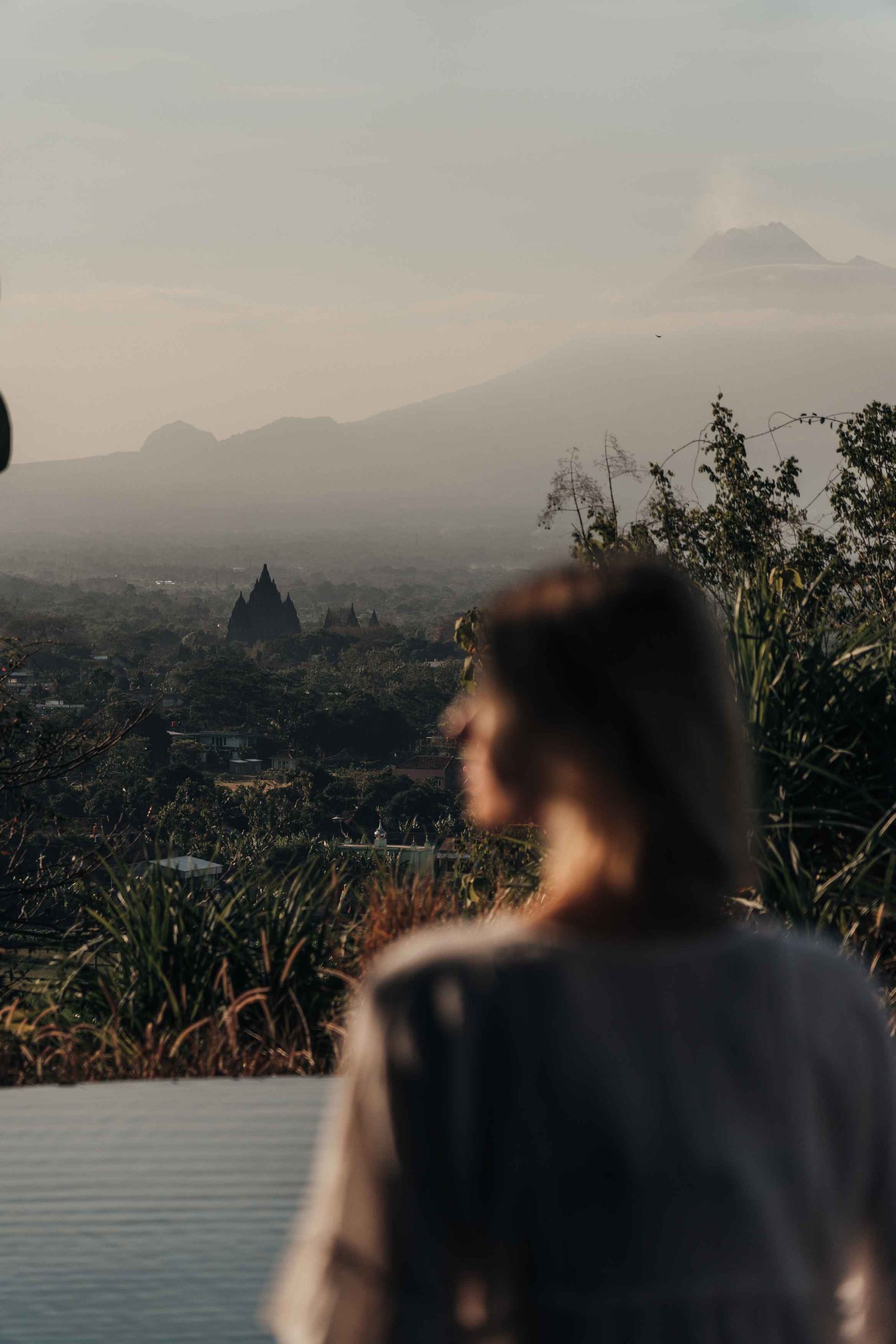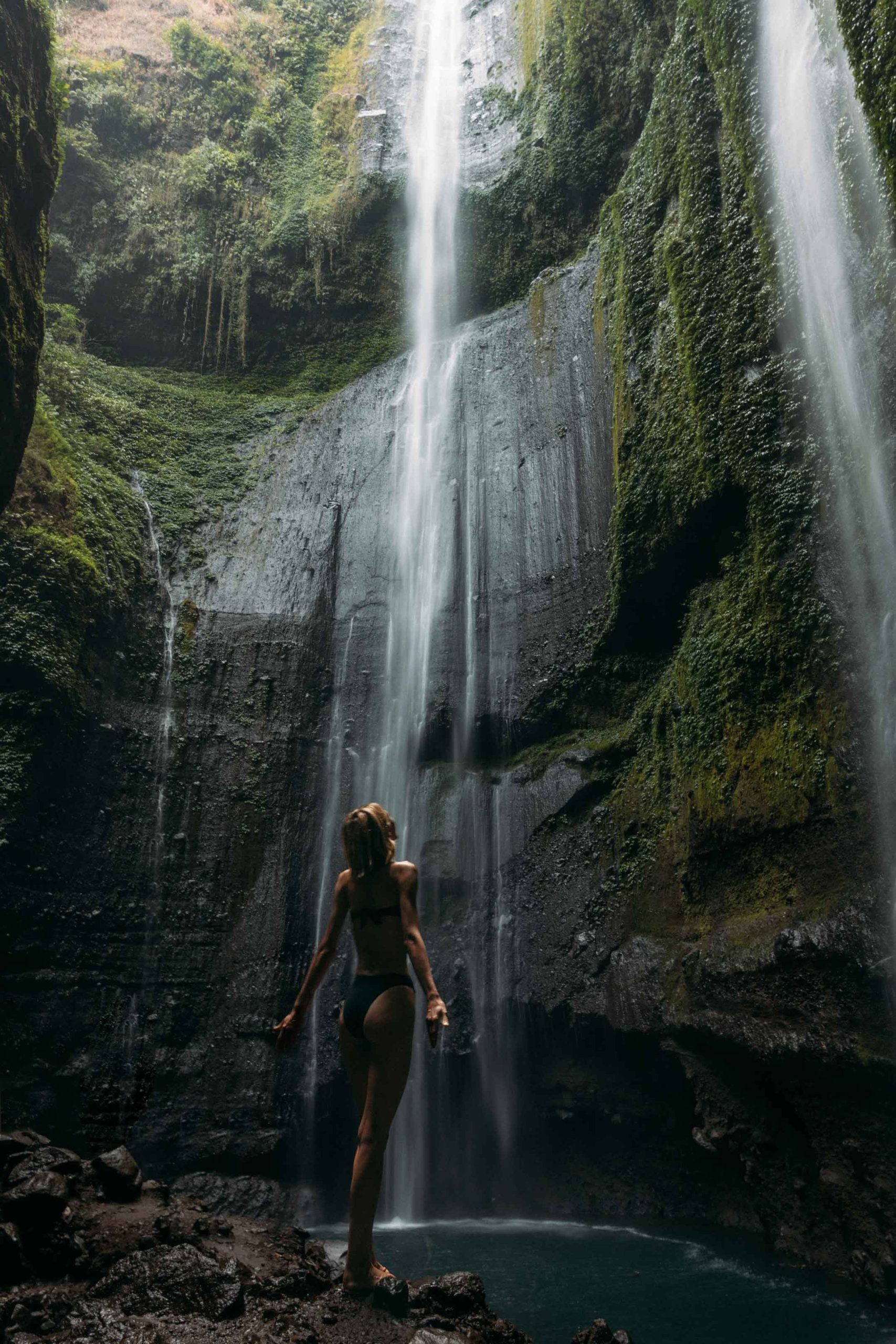Exploring Java – A Week-Long Adventure Itinerary
As the beating heart of the Indonesian archipelago, Java beckons travellers with its rich history and awe-inspiring natural wonders. Dotted with over 100 active volcanoes, it’s full of dramatic landscapes that have shaped the island’s geography and culture. Its rich history from ancient Hindu-Buddhist empires to Islamic sultanates and European colonial powers, left Java with rich cultural heritage and many impressive historical landmarks. Our week-long adventure of exploring Java begun in Surabaya, the dynamic capital of East Java. From there, we embarked on a week-long itinerary that took us through some of the Java ‘s most iconic destinations, from ancient temples to breathtaking waterfalls and majestic volcanoes.
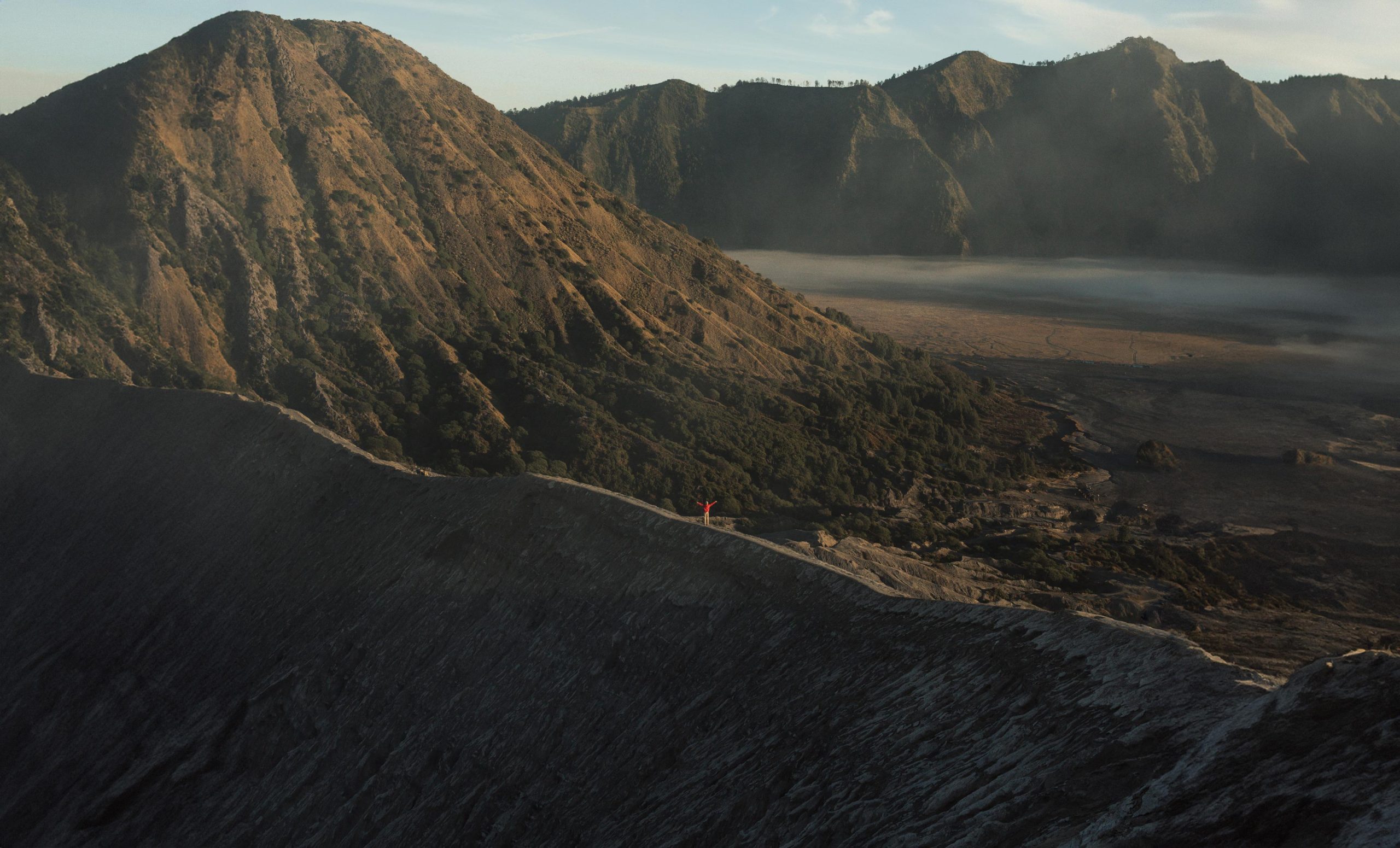
- Surabaya
- Borobudur temple
- Prambanan temple
- Tumpak Sewu Waterfall
- Mount Ijen Volcano
- Bromo Volcano
- Best time to visit Java
- Transportation Options in Java
First stop of the Week-Long Itinerary – Surabaya: Gateway to Java
Surabaya, often referred to as the “City of Heroes,” is a bustling metropolis with a rich history dating back to the Majapahit Empire. As Indonesia’s second-largest city, Surabaya is a melting pot of cultures, where traditional Javanese customs blend seamlessly with modern influences.
Surabaya’s airport serves many national and international destinations. Thanks to this, it is a perfect place to start your week-long itinerary and adventure exploring Java.
If you choose to stay in the city for a day or two, make sure to explore the House of Sampoerna, an impressive museum housed in a Dutch colonial-style building. And visit the local, vibrant Pasar Atom market to try out some of the best Indonesian street food.
↬ NOTE: Since we rented a car in Surabaya and drove across the island ourselves we needed to depart from Surabaya and return to Surabaya. If you choose to travel by public transport, you can start your week-long adventure of exploring Java in Jakarta instead.
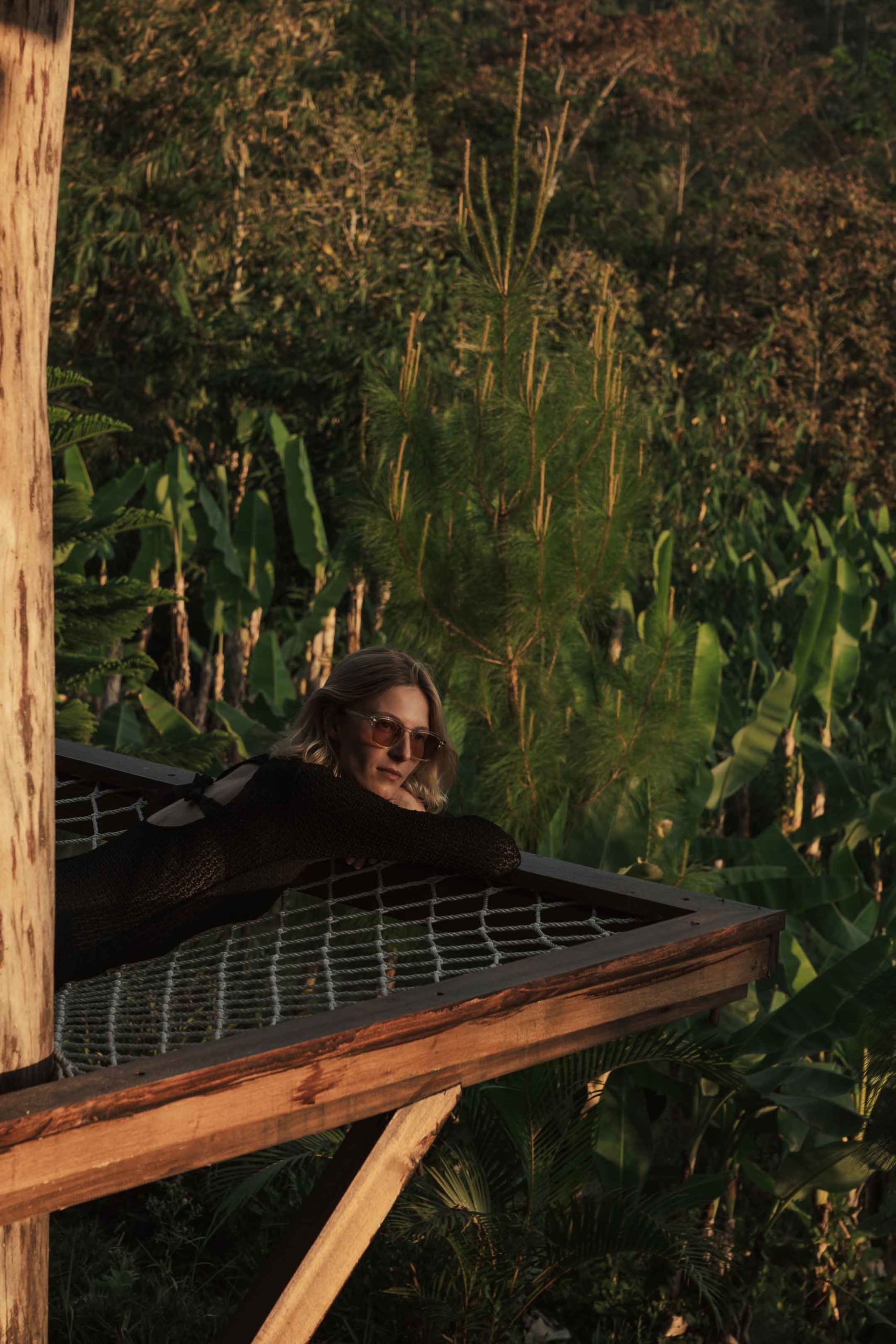
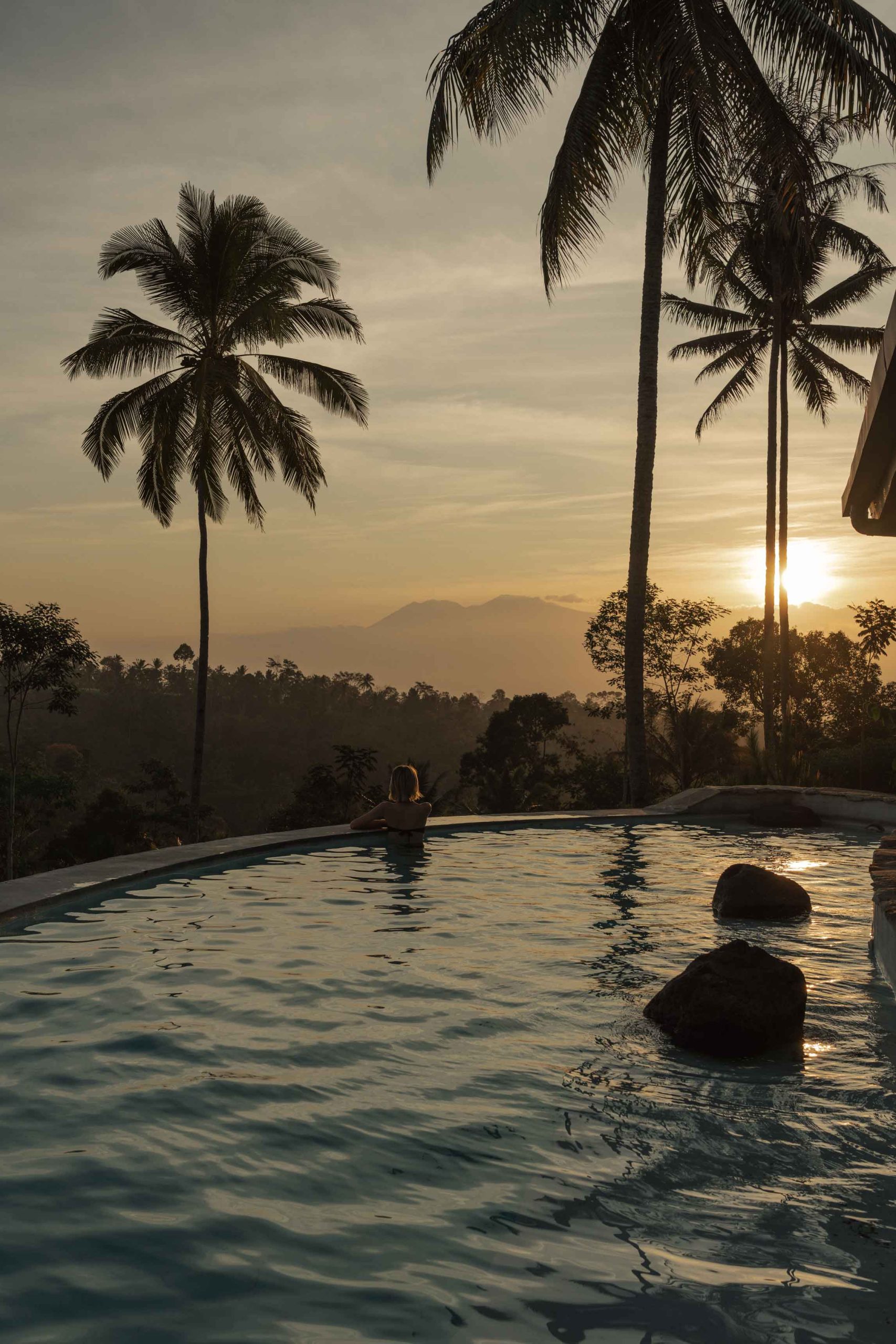
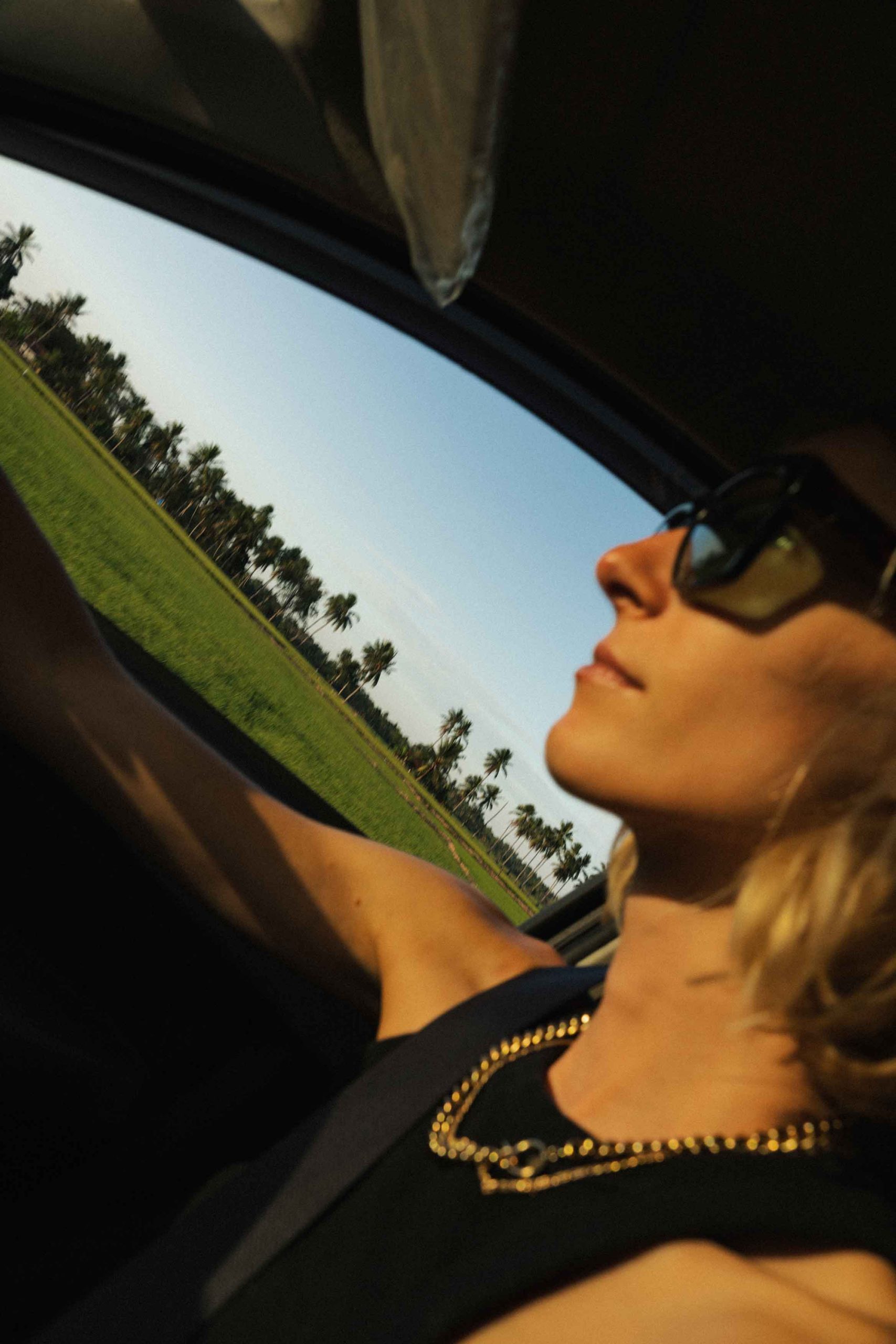
Borobudur Temple: A UNESCO World Heritage Site
Our first stop is Borobudur Temple, the largest Buddhist temple in the world. Located near the city of Yogyakarta in Central Java, Borobudur offers a glimpse into Indonesia’s ancient past. Built in the 9th century during the reign of the Sailendra Dynasty, this magnificent structure comprises nine stacked platforms adorned with over 2,600 relief panels, 500 Buddha statues and stupas, representing the journey to enlightenment. From the top platform, you can enjoy panoramic views of Mount Merapi and Mount Merbabu.
Make sure to be at the ticket office of the Borobudur temple at the opening hour: 6:30am. There are limited amount of tickets sold each day and they are all sold by 7am. The ticket costs 465k IDR pp and you will get a time slot when you can visit (our was at 9am). 150 people visit the temple at the same time, split into few groups. Each group has a guide. You have to follow your guide for the first parts as you learn about the history and its meaning. Once you reach the top you are free to wander around. You get a total of 1h in the temple.
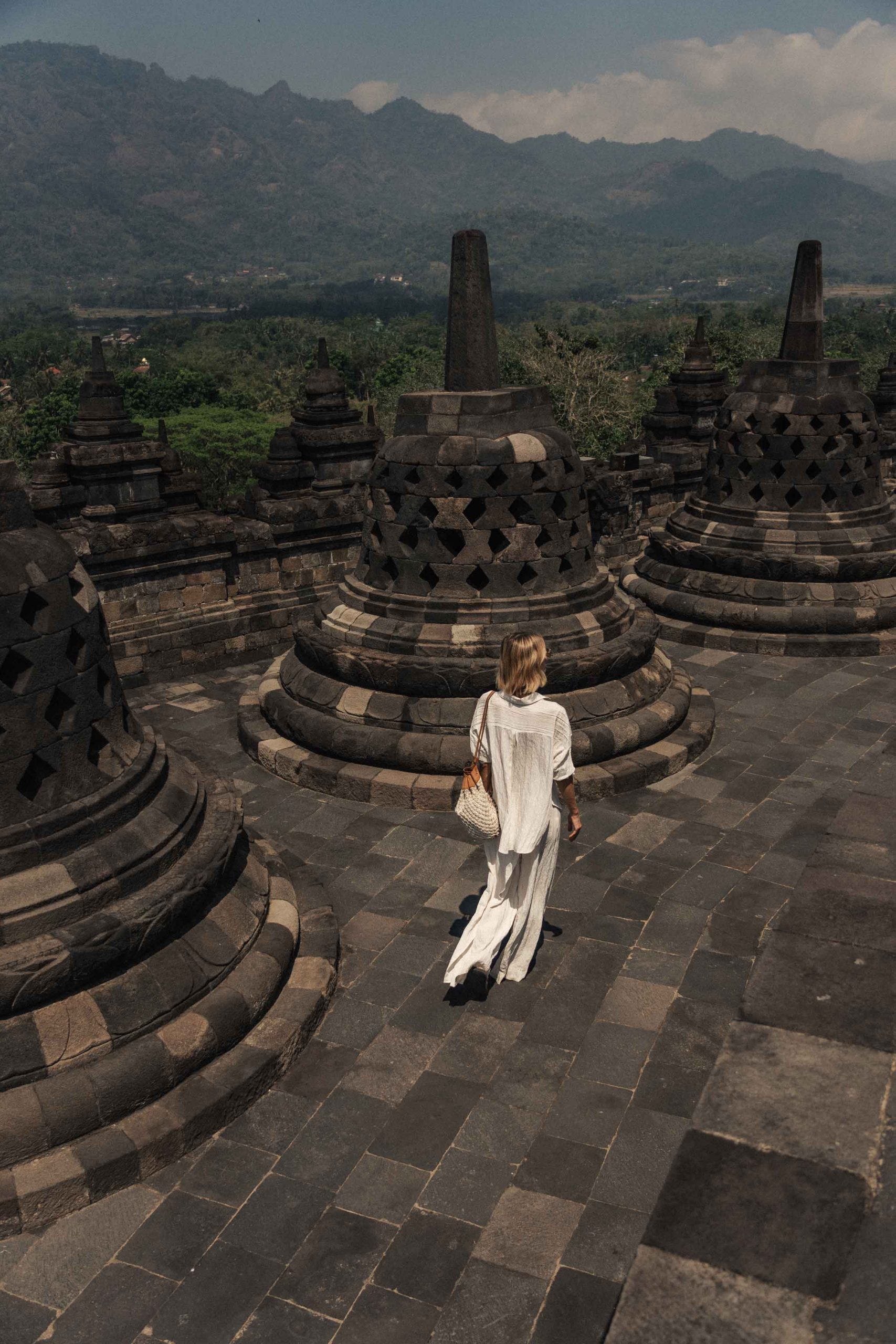
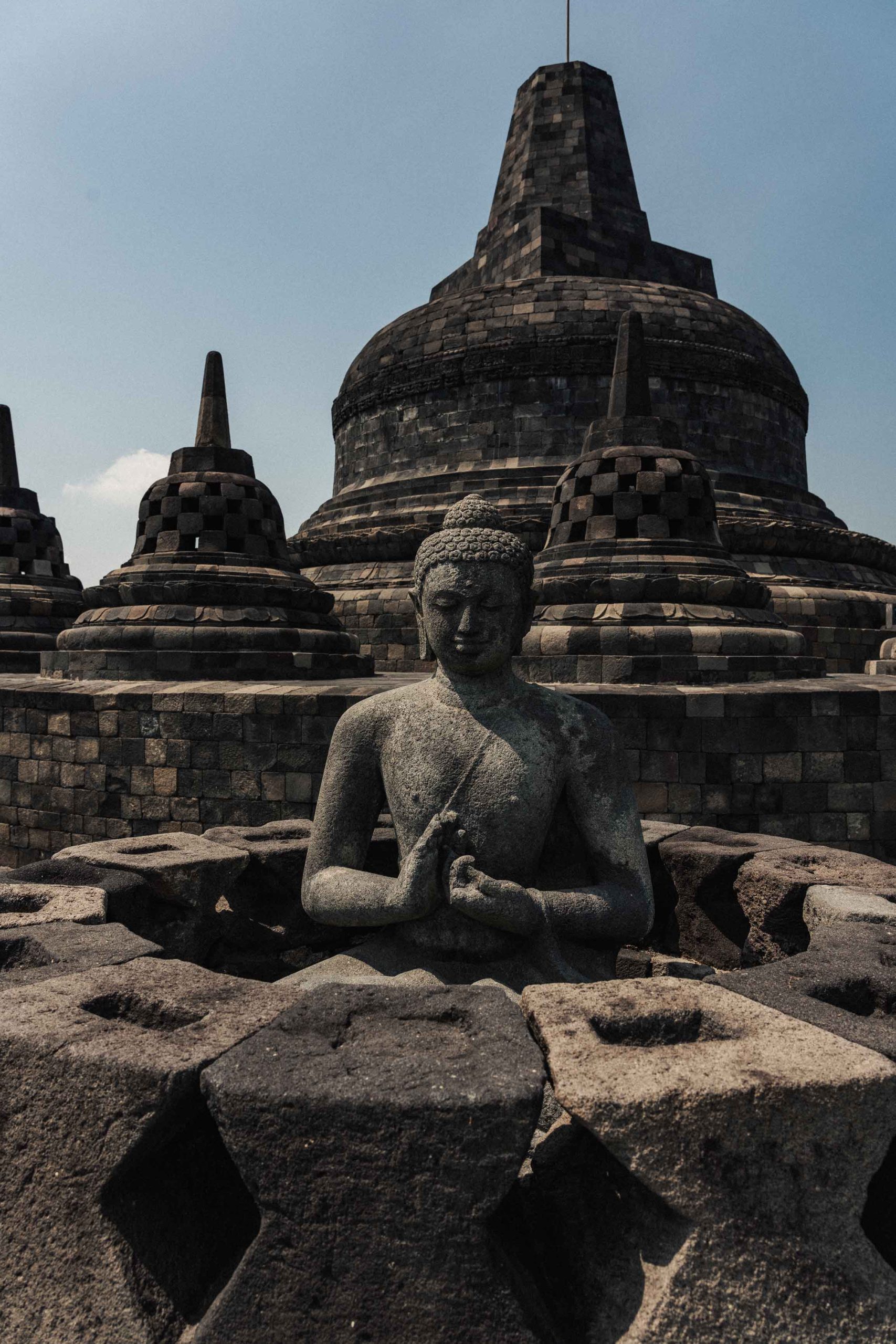
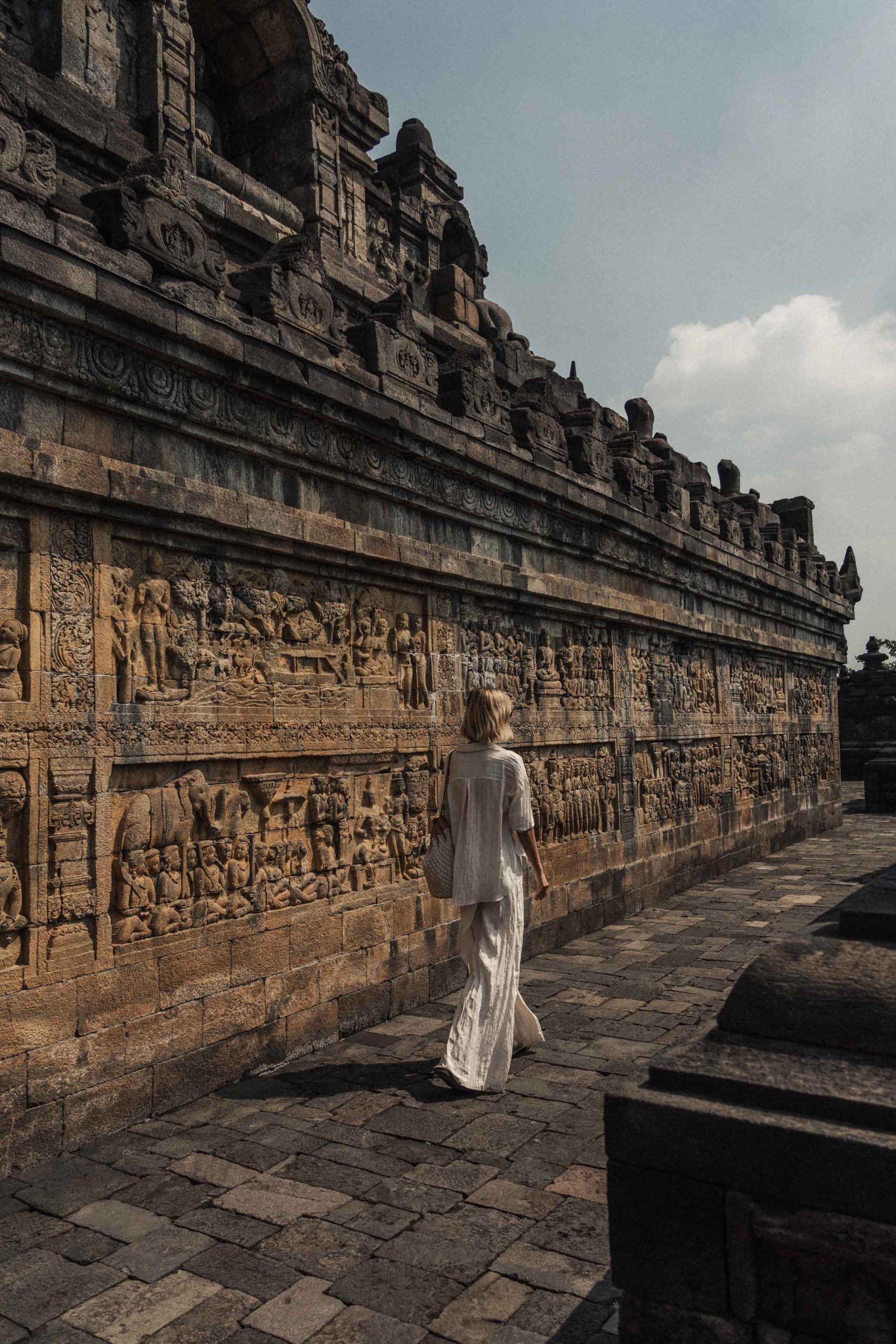
Prambanan Temple: A Hindu Marvel
Next, you will visit Prambanan Temple, a masterpiece of Hindu architecture dedicated to the Trimurti: Brahma, Vishnu, and Shiva. Constructed in the 9th century under the rule of the Mataram Kingdom, this UNESCO World Heritage Site features towering temples adorned with intricate carvings depicting scenes from Hindu epics like the Ramayana and Mahabharata.
Unlike Borobudur temple, Prambanan can be visited any time of the day. However, we highly recommend you to come early. We arrived at 6:30am and were THE ONLY people in the complex. We wandered around by ourselves for 2h and it was wonderful. When we were leaving, around 8am tourists started to show up.
↬ TIP: Stay at the superb Sumberwatu Heritage Hotel. The views from the property are spectacular.
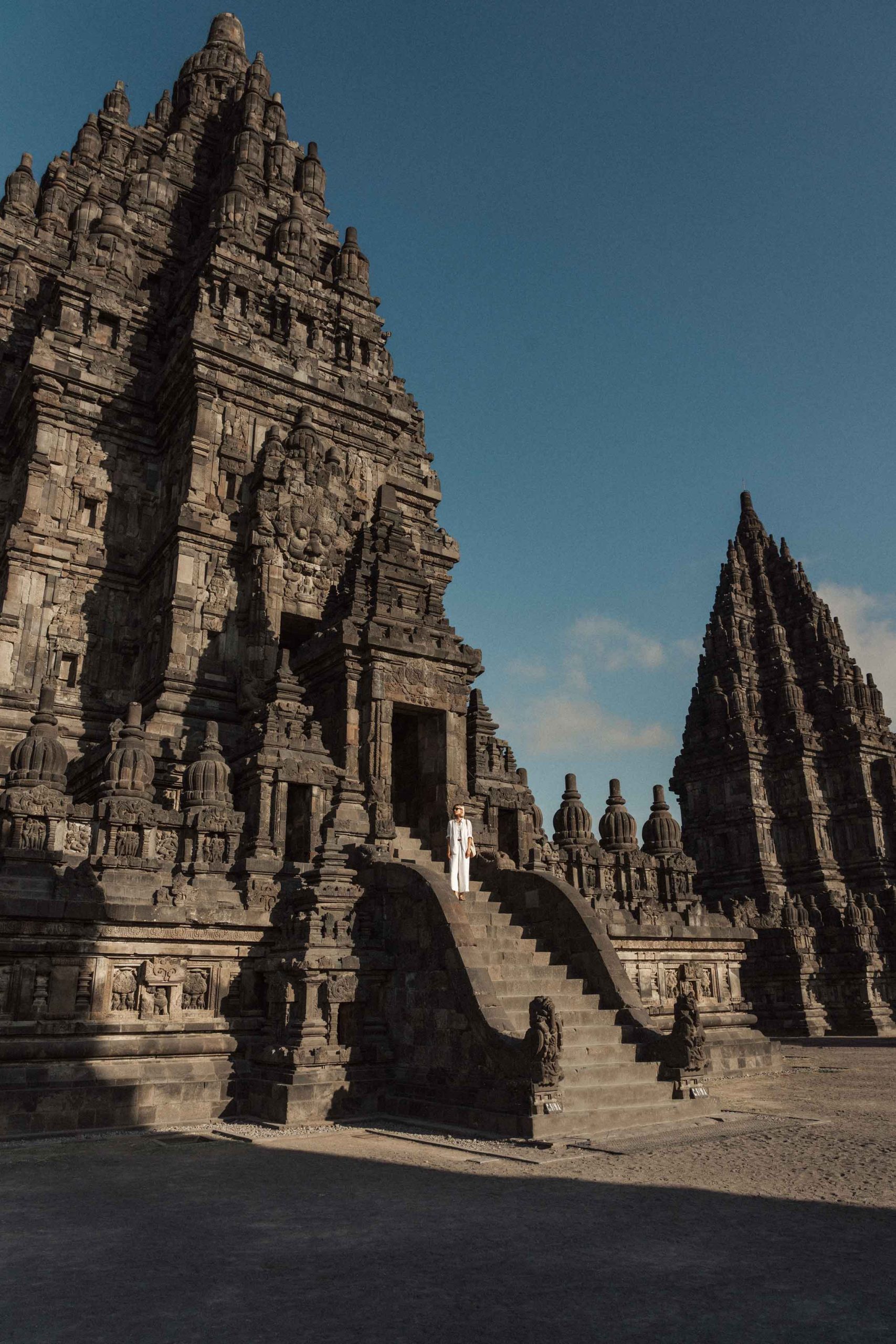
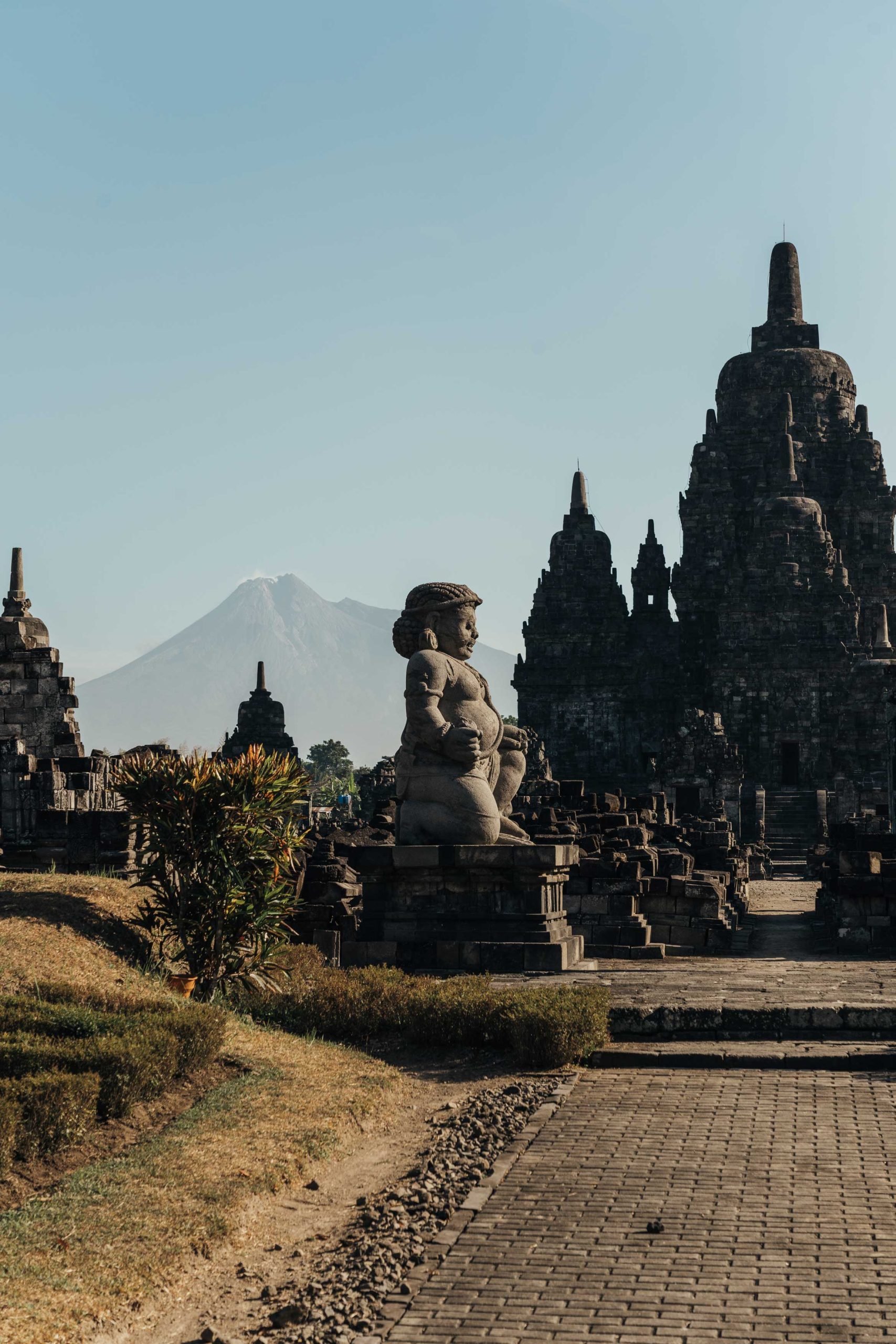
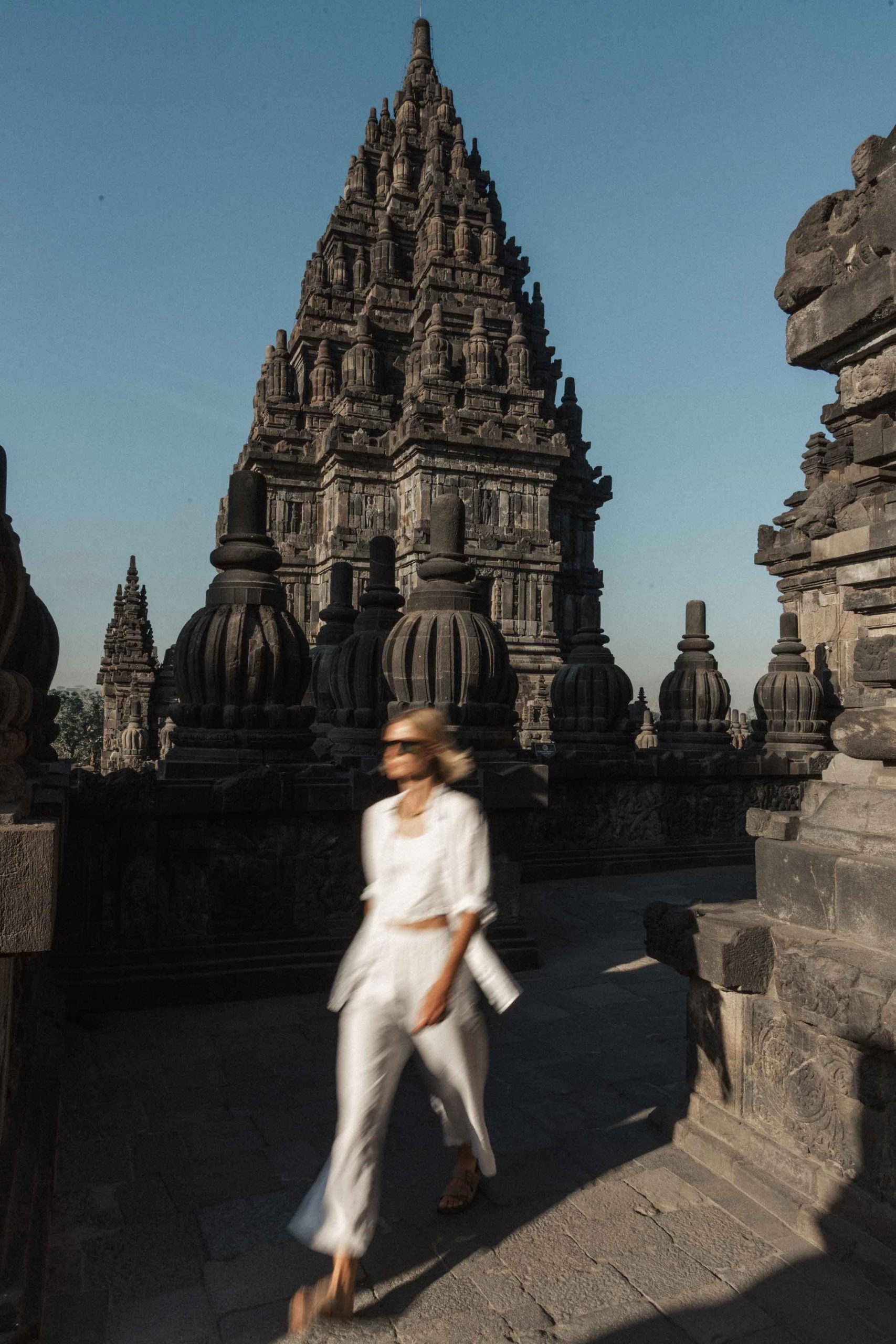
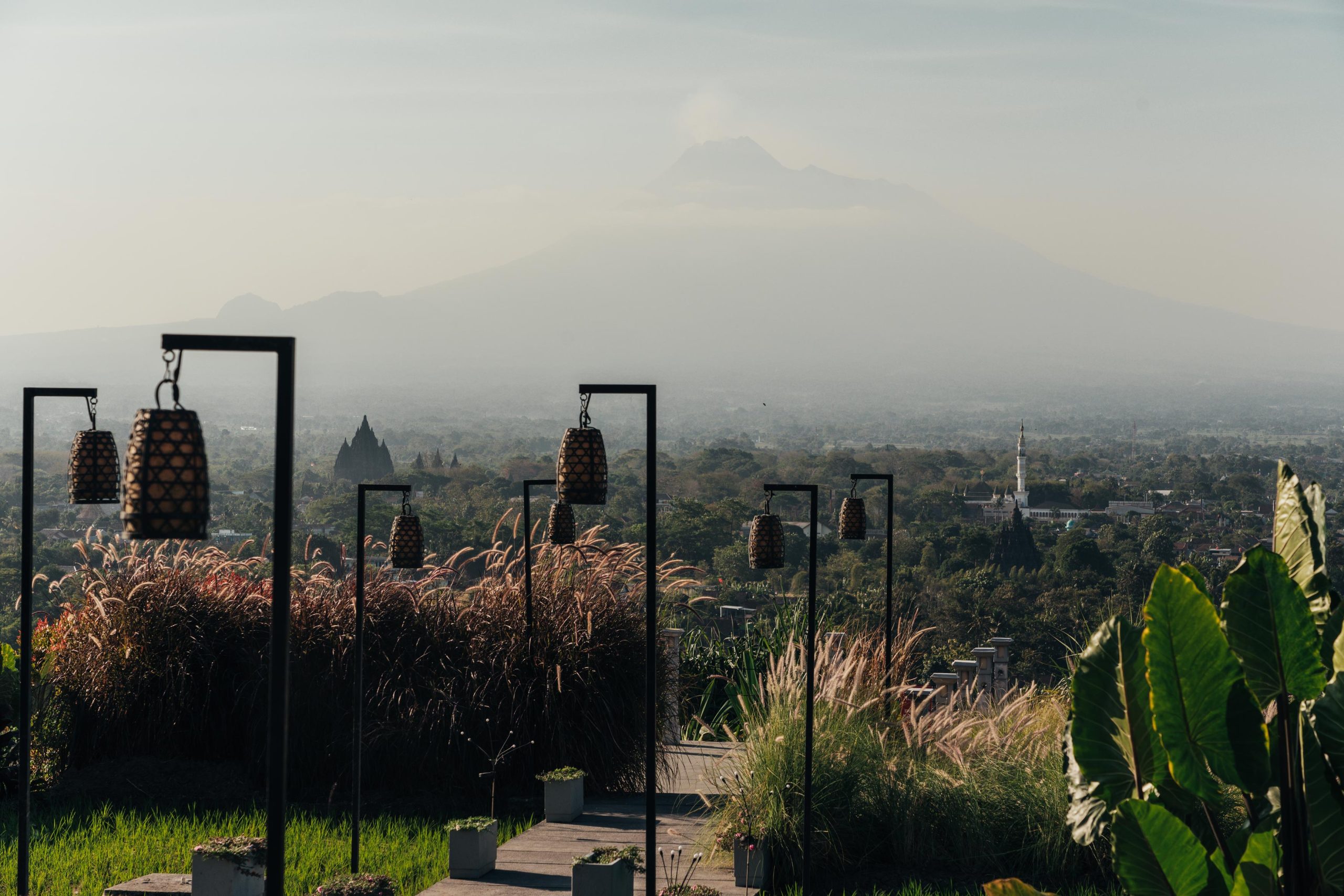
Tumpak Sewu Waterfall: Nature’s Spectacle
It’s time to venture eastward, towards in Lumajang, East Java, where you can find Tumpak Sewu Waterfall, often referred to as the “Thousand Waterfalls.” Cascading from lush green cliffs over 300 feet tall, this breathtaking natural wonder is a must visit during your week-long Java adventure itinerary. Descend the steep trail leading to the base of the waterfall. First follow the steep steps, then climb small waterfalls with a help of ropes and ladders. Beware this is not an adventure for everyone. The way is very slippery and steep. There have been deadly accidents on this path, so make sure to evaluate your strength accordingly. If you don’t feel like climbing, see the mesmerising view of the falls from the viewing platform.
↬ TIP: Take cash with you. To enter the fall you must pay THREE separate fees. The entry fee is very little, but the last booth is located at the very bottom of the canyon, just before the falls.
If you have some spare time in this area visit also Kapas Biru Waterfall and Air Terjun Kabut Pelangi.
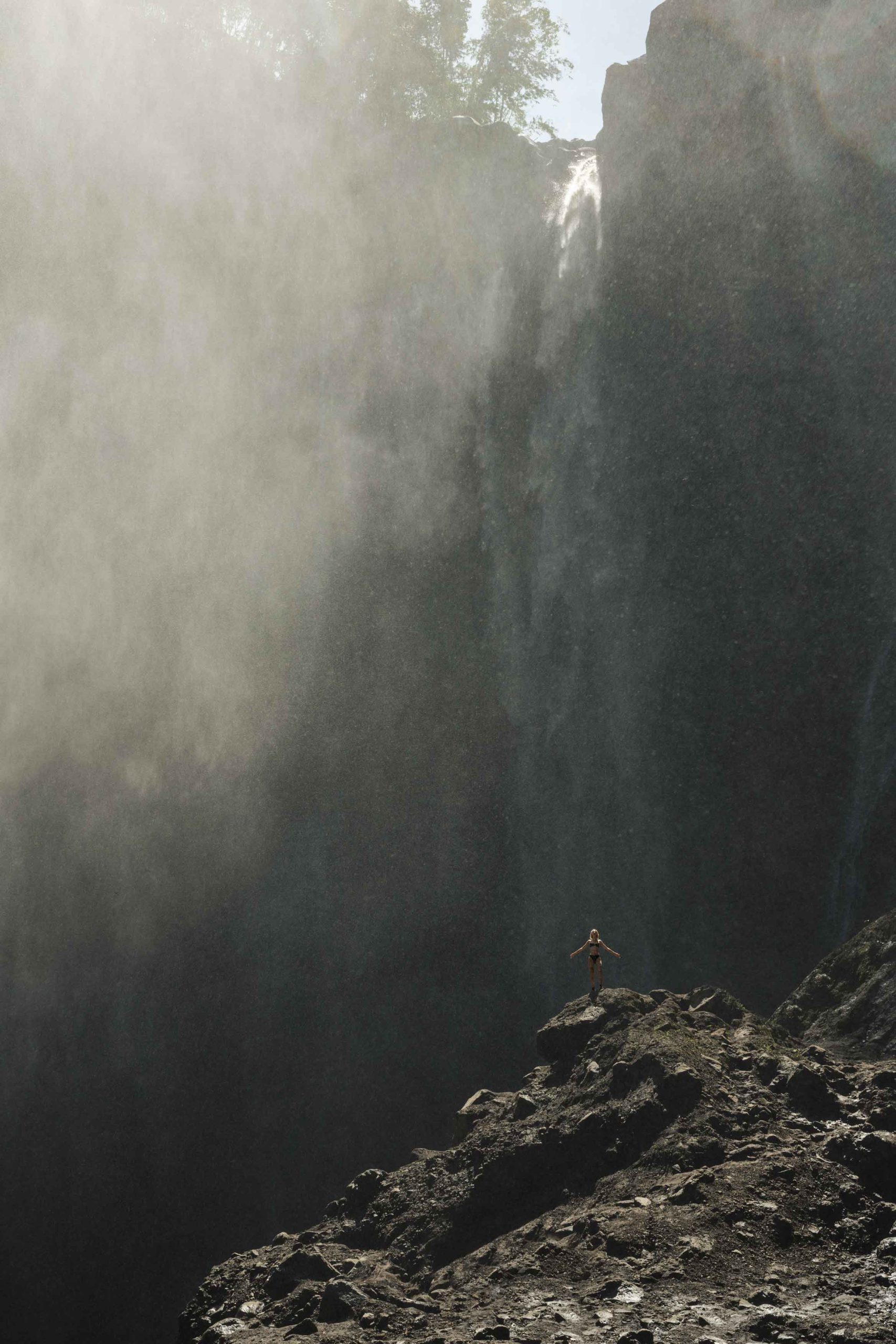
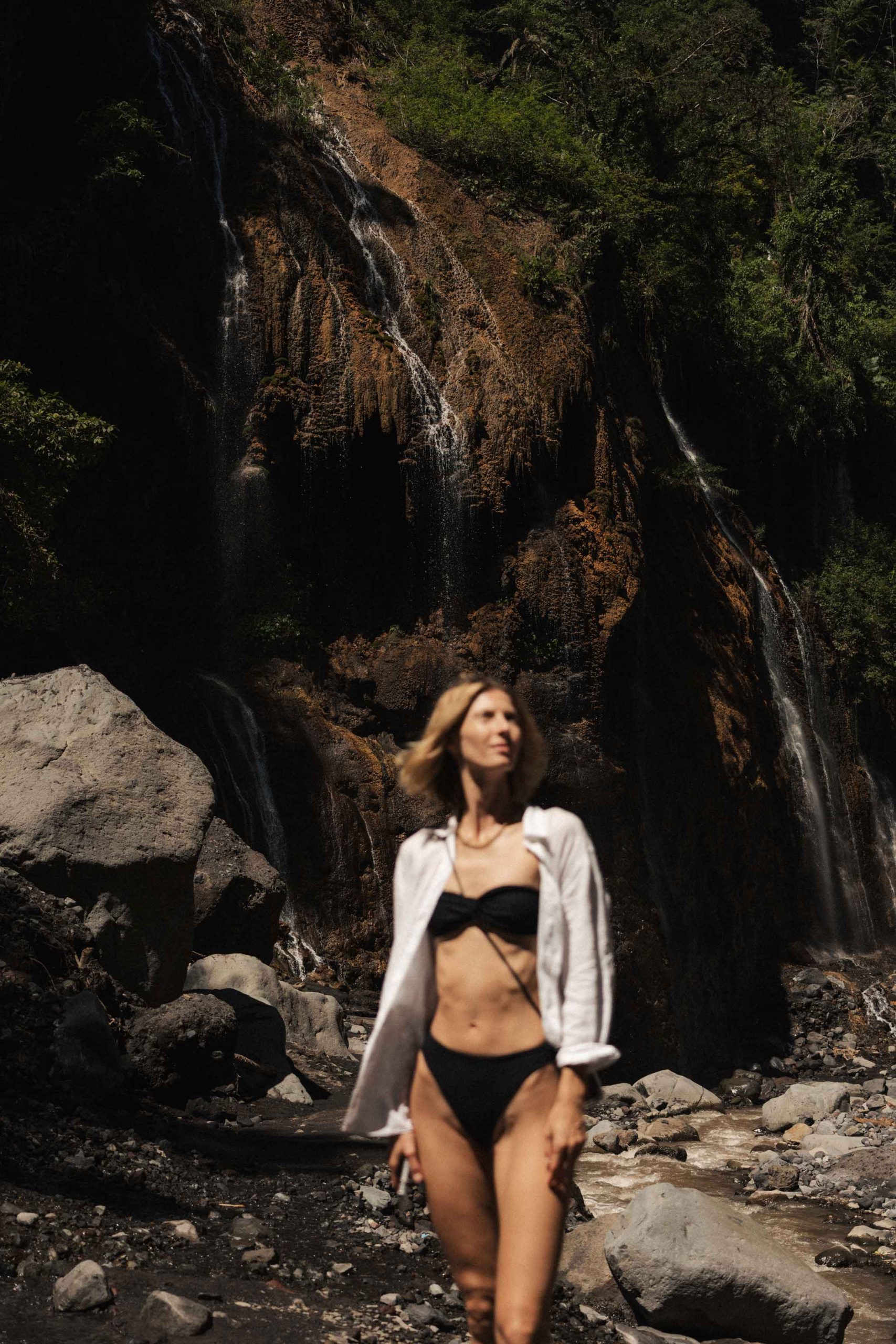
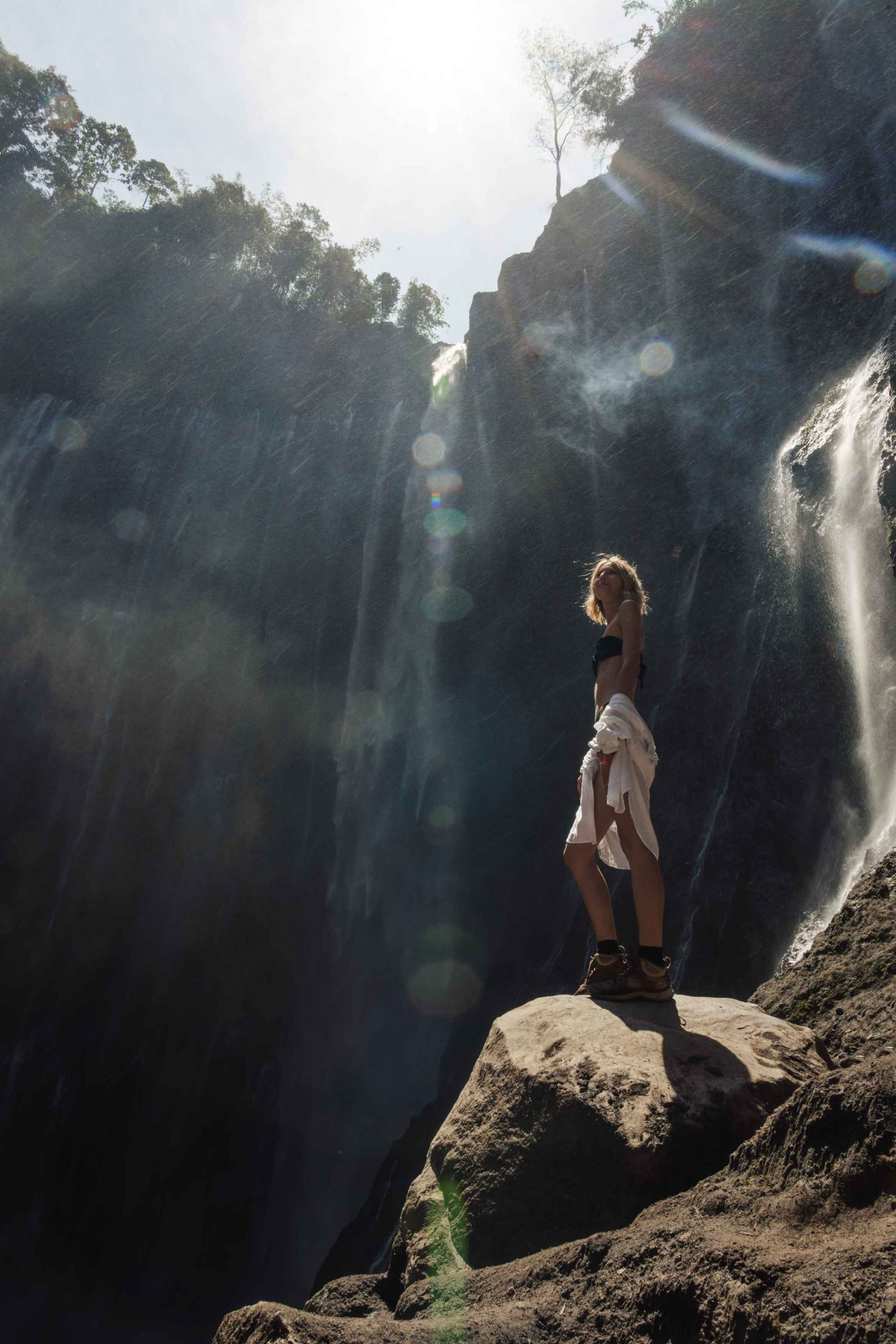
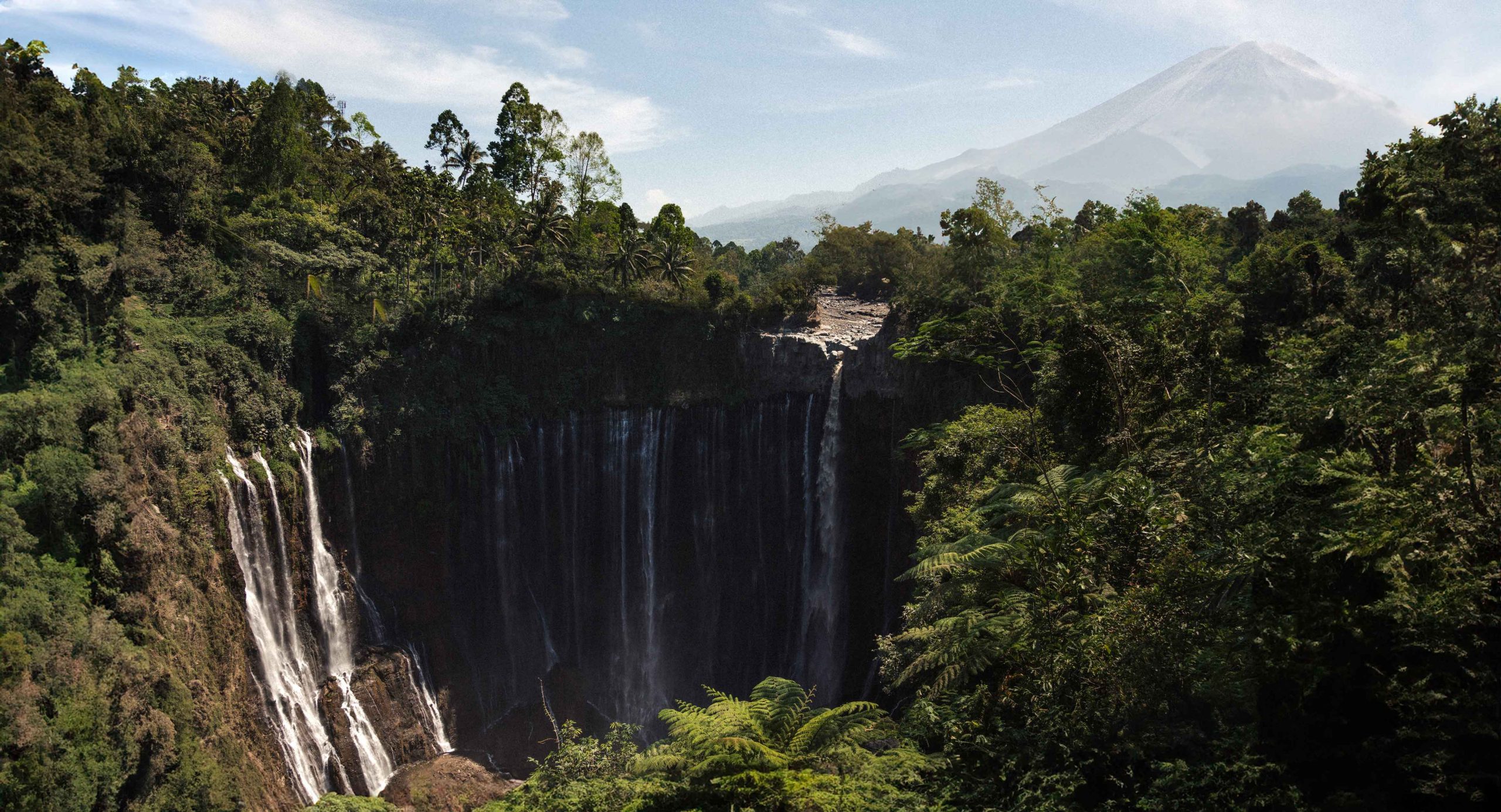
Mount Ijen Volcano: A Sulfuric Expedition
Your journey takes a dramatic turn as you arrive to the Banyuwangi, East Java. Here you will hike to the summit of Mount Ijen, an active volcano renowned for its mesmerising blue fire and sulfur mines. This challenging trek will reward you with panoramic views of the crater lake and surrounding landscapes. Start your hike at 2 am to arrive at the top before dawn. Follow the local guides towards the the volcanic crater to witness the ethereal glow of the blue flames. Hike back up and wait for the sun to raise above the horizon and warm up the area. Witnessing the raw power of nature at Mount Ijen is an unforgettable experience.
You don’t need a guide to visit Mount Ijen. The hike up in very straight forwards. Make sure to dress appropriately. The temperature on the top ranges between 0-3 degrees.
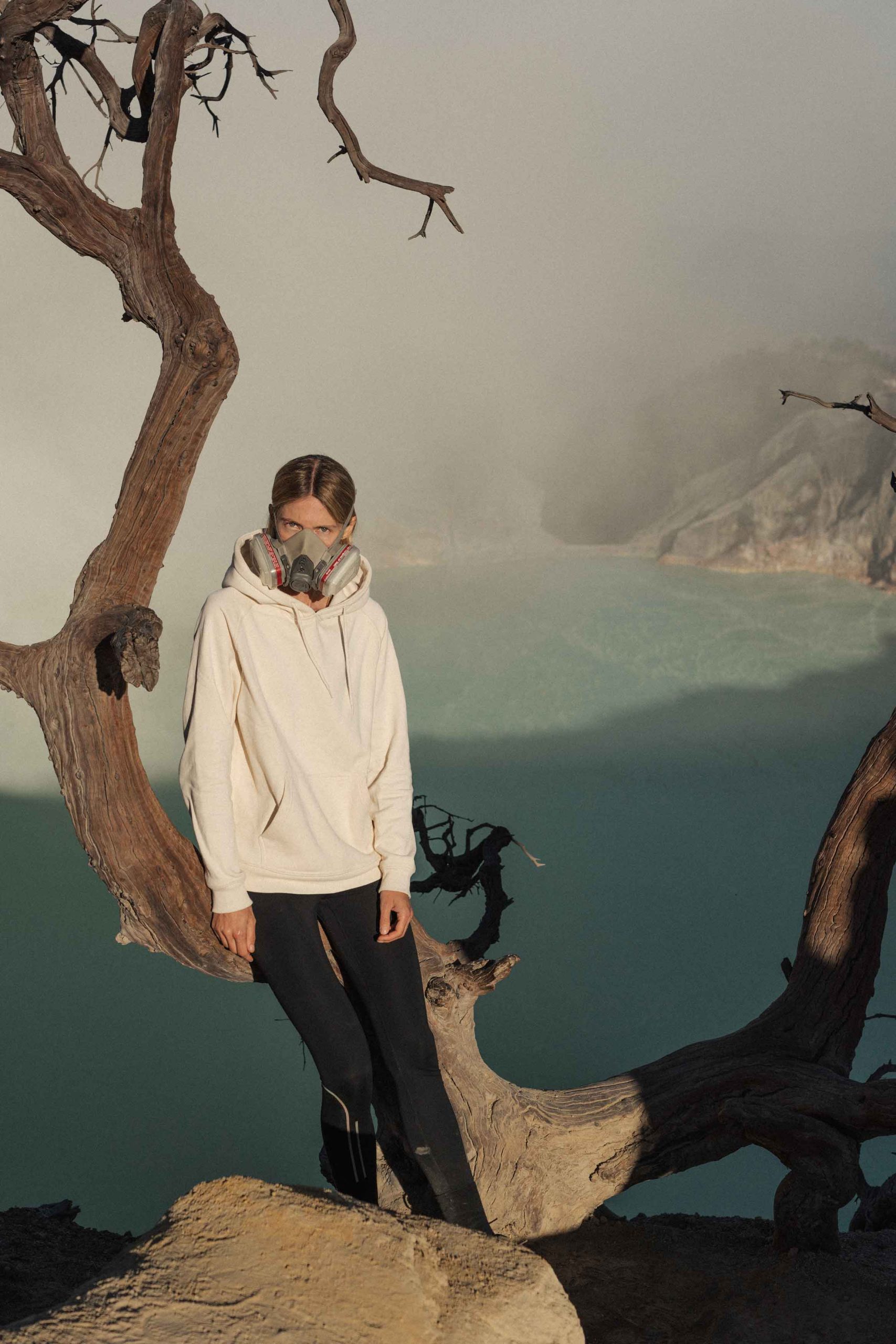
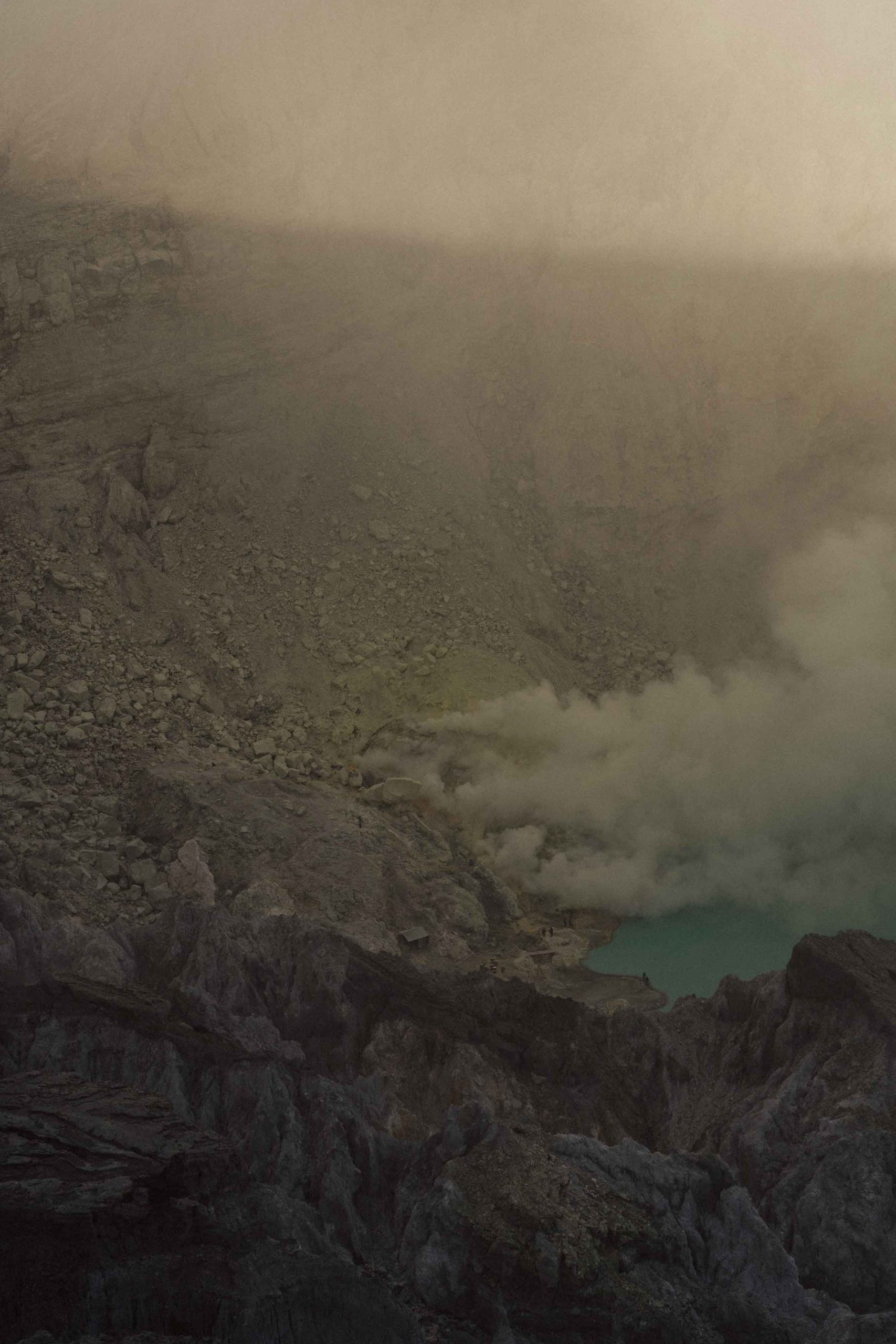
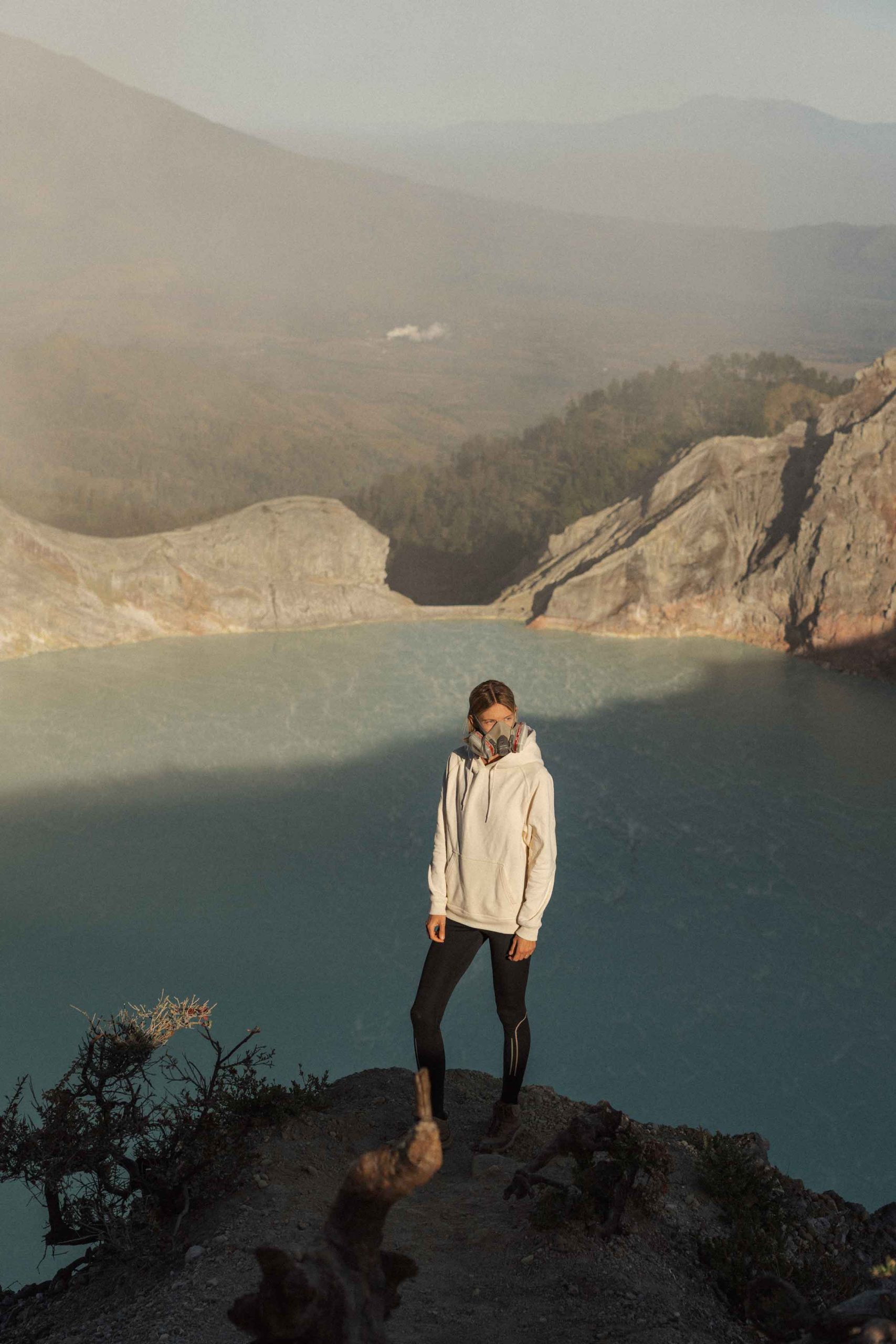
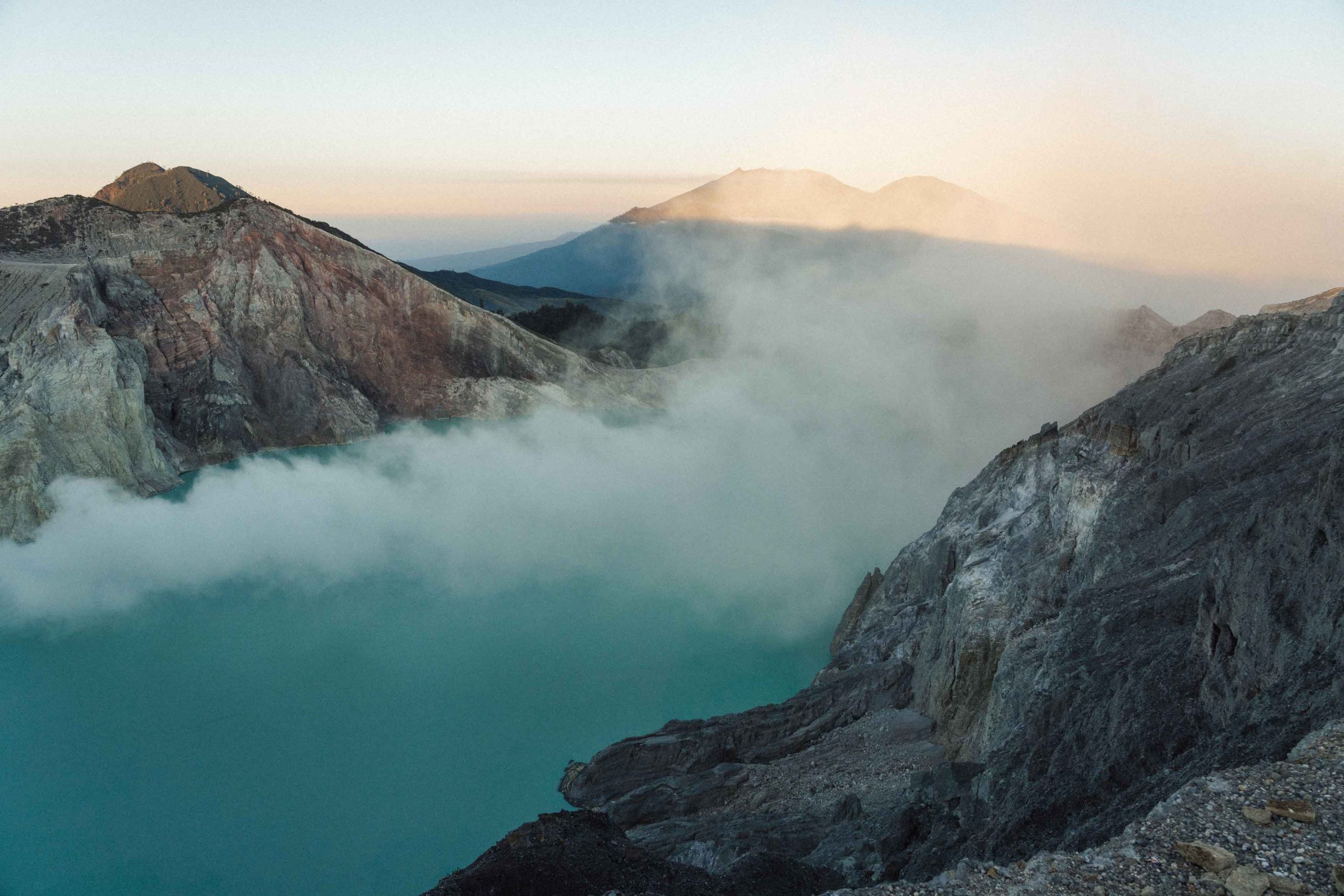
Bromo Volcano: Land of the Gods
Your final stop of your adventure on the week-long itinerary in Java is the surreal landscape of Mount Bromo, one of the island’s most iconic volcanoes. Situated in the Bromo Tengger Semeru National Park, this otherworldly destination is a testament to Java’s geological diversity. The volcano is surrounded by a sea of volcanic sand and steep cliffs, accessible only to 4×4 vehicles, scooters or on foot. We highly recommend you to do a jeep tour with a guide which will take you to the best locations.
↬ TIP: Start your adventure before dawn with a hike to Mount Bromo first. Wait for the sunrise at the edge of the active volcano, before driving to the viewpoint at Mount Penanjakan. Thanks to this you will avoid the crowds- everyone does the same tour, but in the other order.
Approximately 25 kilometers from the base of Mount Bromo, nestled within a deep gorge in the Tengger Massif, lies Madakaripura Waterfall. Don’t forget to visit this natural wonder. It is often referred to as the tallest waterfall in Java, with its main cascade plummeting over 200 meters down sheer cliff walls.
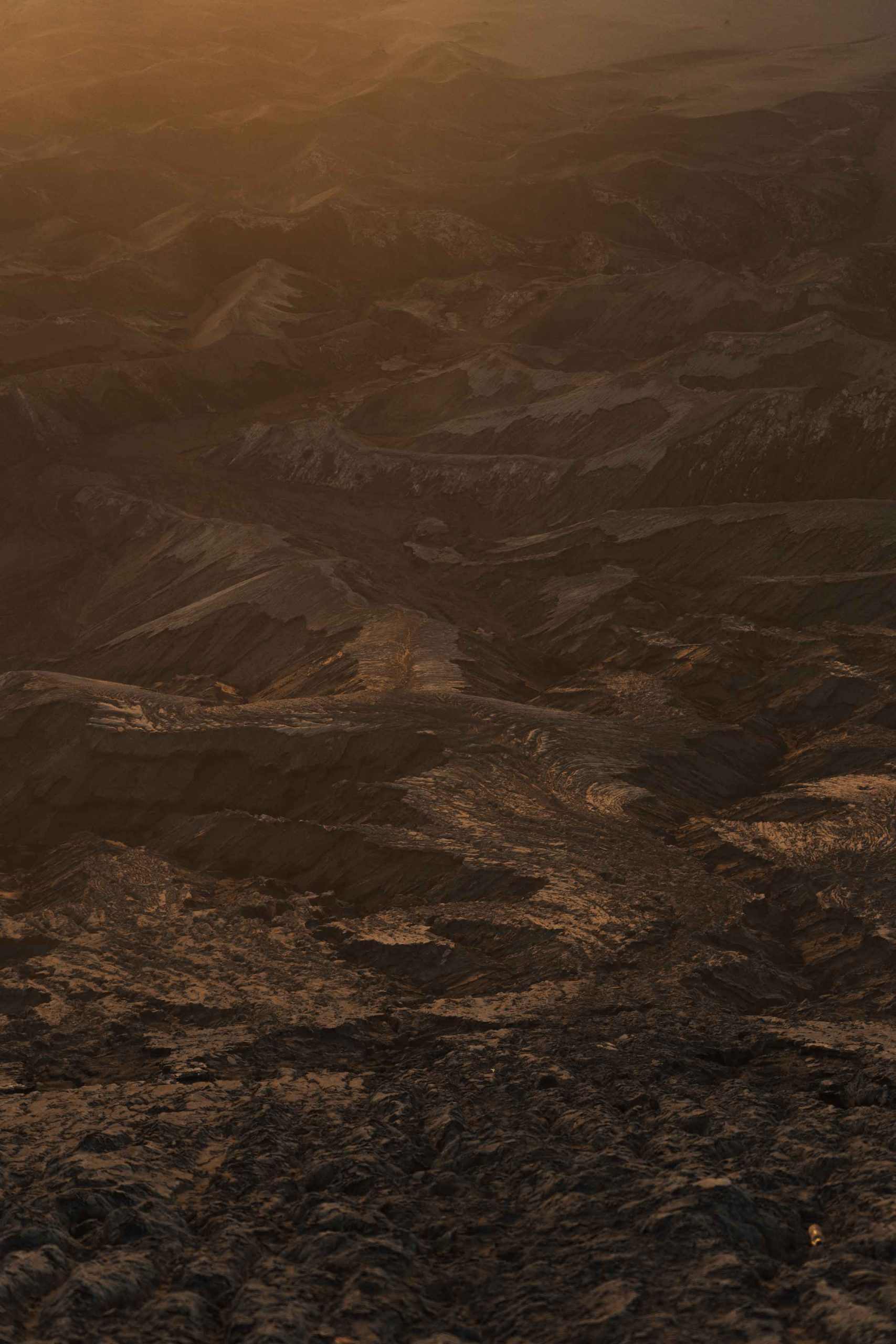
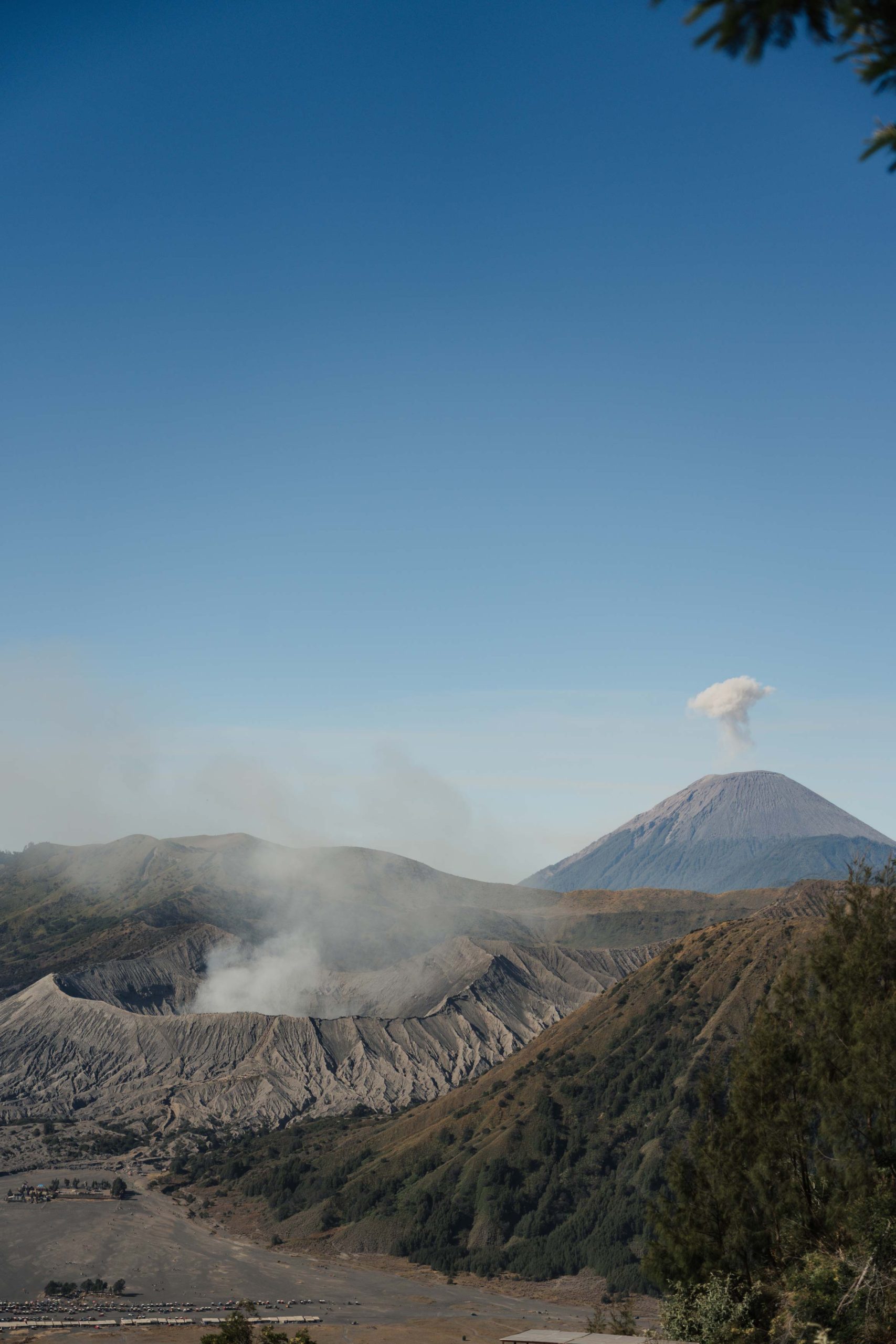
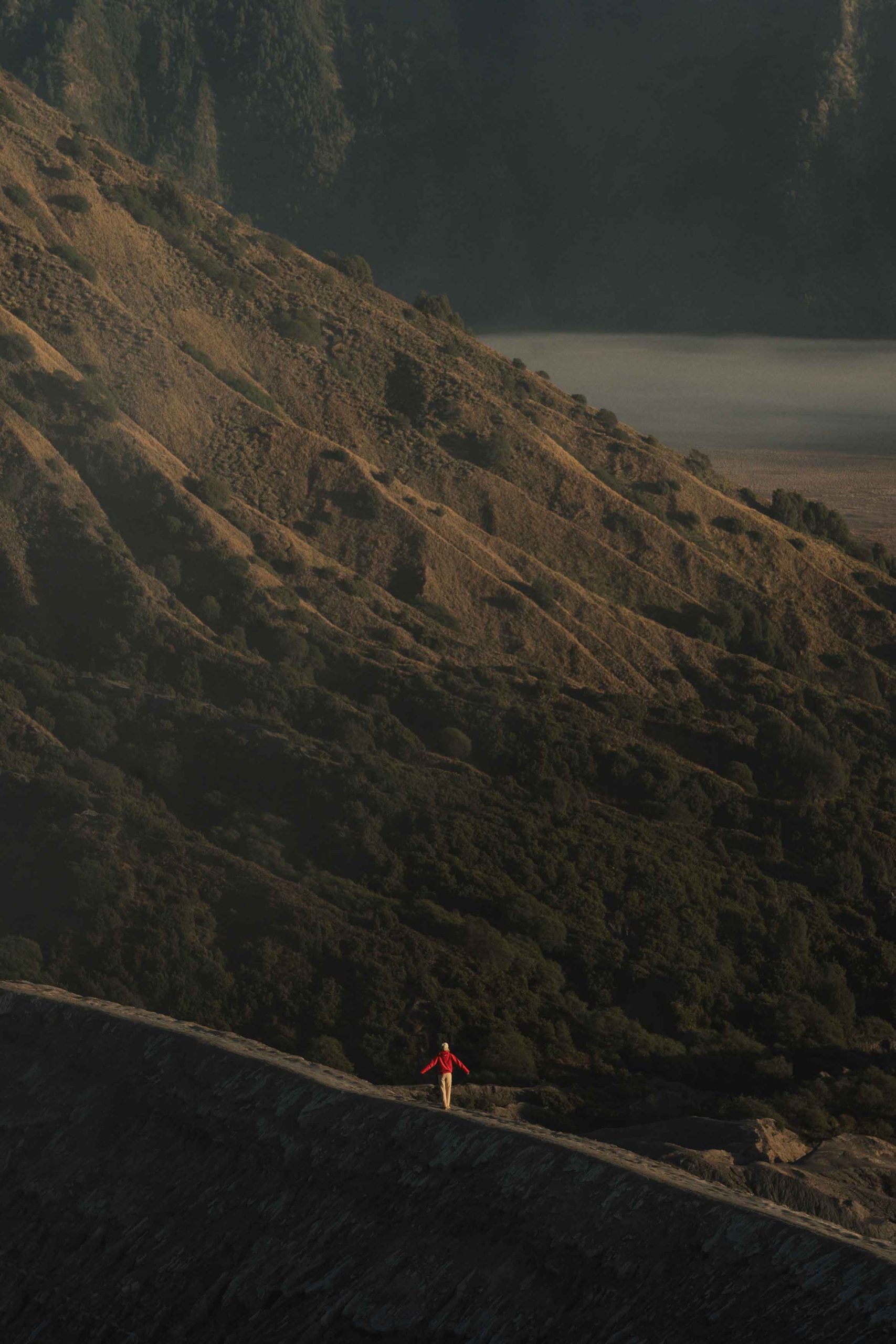
Best Time to Visit Java
The best time to visit Java is during the dry season, which typically falls between May and September. During this period, the weather is hot and rainfall is minimal, making it ideal for outdoor activities and sightseeing. Remember that July and August are the busiest months in Indonesia. Book your accommodation in advance.
What to Bring During Your Week-Long Itinerary in Java
For a week-long adventure around Java, it’s essential to pack light and breathable clothing. Java, as the majority of Indonesia is Muslim, therefore ladies should choose longer pants, or dresses and cover their shoulders (that also applies to visiting Buddhist temples). For your hikes to Mount Ijen and Bromo bring sturdy hiking shoes, outdoor jackets, beanie and gloves (it gets really cold at night). Don’t forget a sunscreen, insect repellent, a refillable water bottle. And of course a camera to capture the stunning landscapes and cultural landmarks along the way.
↬ READ: Essential Packing Tips For All Travellers
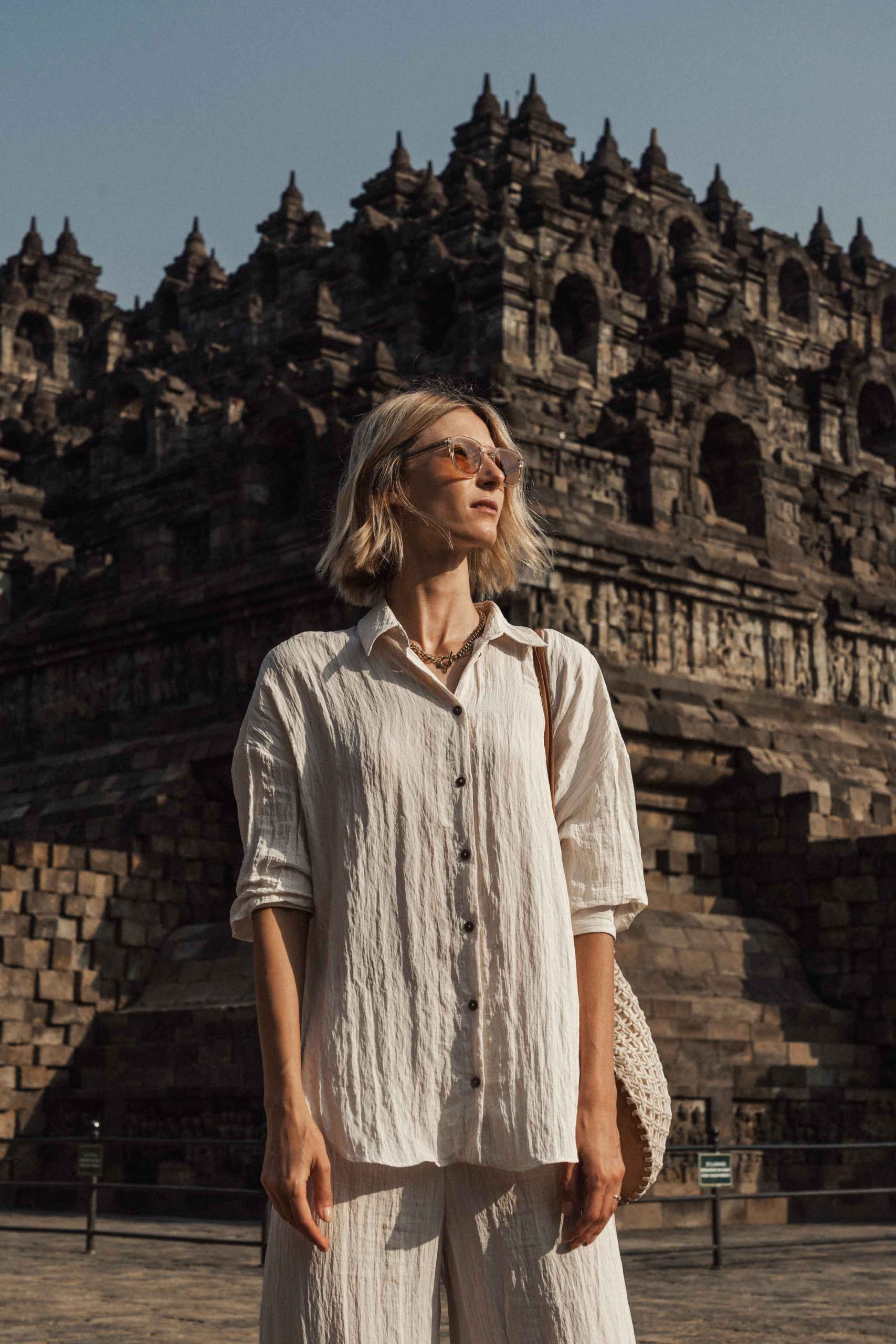
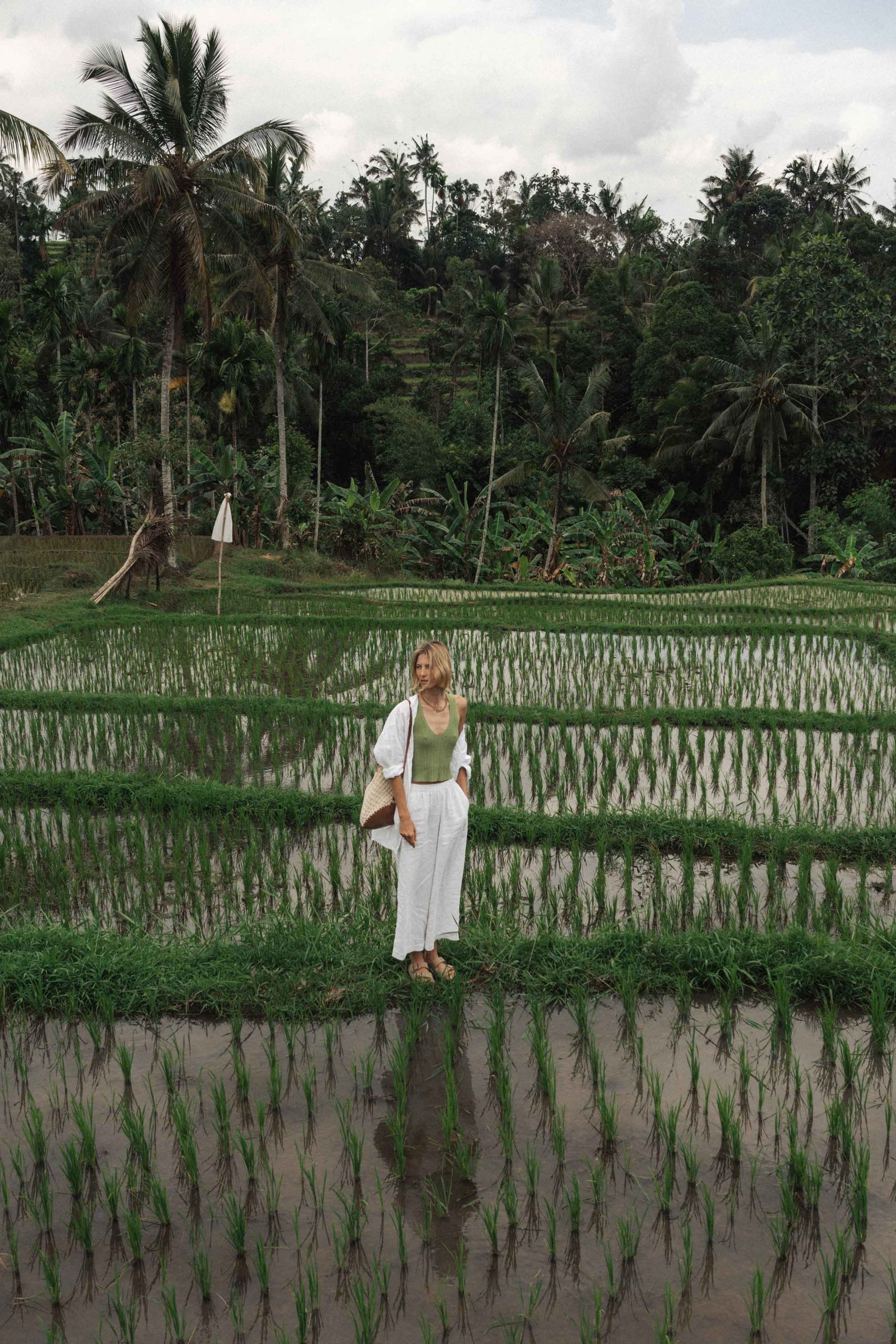
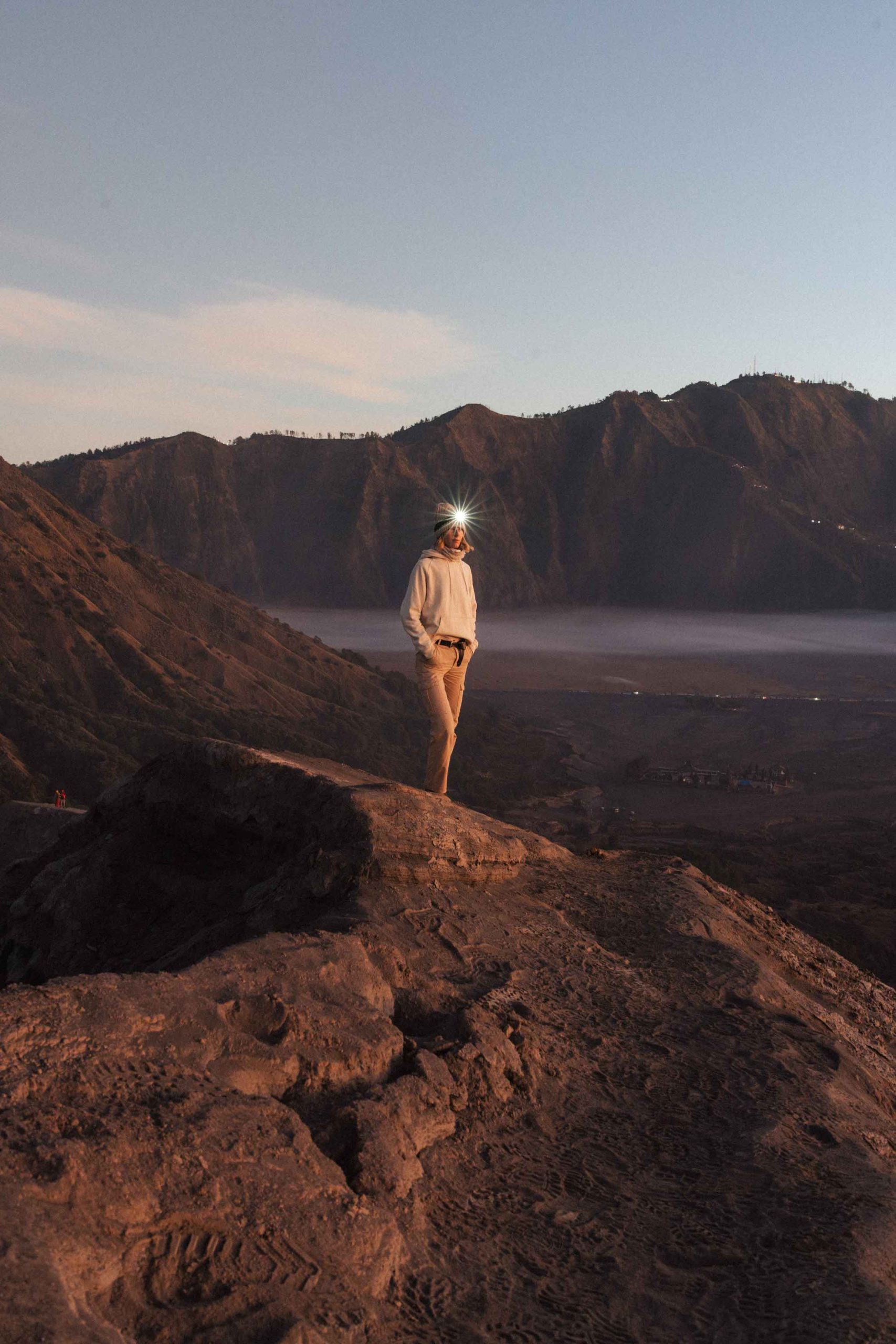
Transportation Options in Java
There are 2 main ways to traveling around Java that most tourists use. Mostly depending on travellers budget, they either hire a private car with a driver, or use the public transport such as buses and trains.
Private car with a driver
Hiring a driver ensures local expertise and hassle-free navigation. However the drives in between the locations are long and tiresome. Hiring a driver for one week is also expensive. You are looking at a cost of 65-100 EUR per day (per car).
Public transport
Alternatively, buses and trains provide affordable options for budget travellers. This definitely makes the trip more adventurous, but also elongates the travel times and gives less flexibility.
From Surabaya or Jakarta you can take a train to Yogyakarta. From Yogyakarta to Borobudur and Prambanan you can travel by a taxi. To visit Tumpak Sewu Waterfall by a public transport, you must take a train from Yogyakarta to Malang. Then from Malang hire a private driver to Tumpak Sewu Waterfall (return to Malang). From Malang you can also hire a private driver or join a tour to Bromo (return to Malang). Alternatively you can try to rent a scooter in Malang and do the drive yourself. From Malang to Banyuwangi you can travel by a train or a bus. In Banyuwangi you should rent a scooter to drive to Mt Ijen. From Banyuwangi you can take a train or a bus back to Surabaya, or continue via a ferry to Bali.
↬ READ: Fall in Love with Bali – Guide to the Bucket List Island
Self-drive car
Another option is to hire a car and drive around the island yourself. It is an adventurous option that also gives you a lot of freedom and flexibility. However be mindful that driving in Java is not for faint-hearted or not experienced.
↬ READ: Everything you need to know about renting a car and self-driving across Java
